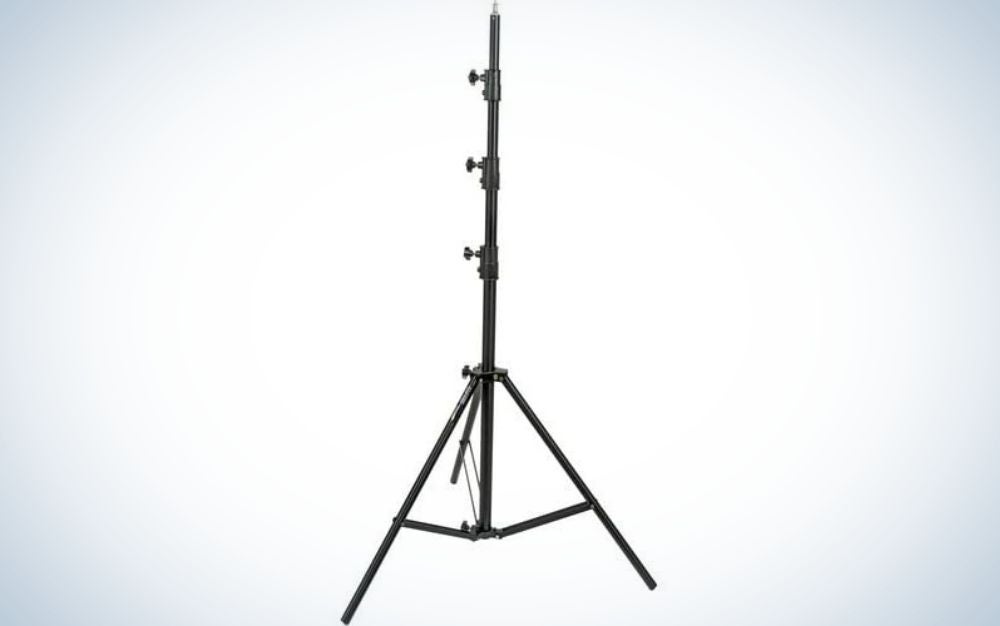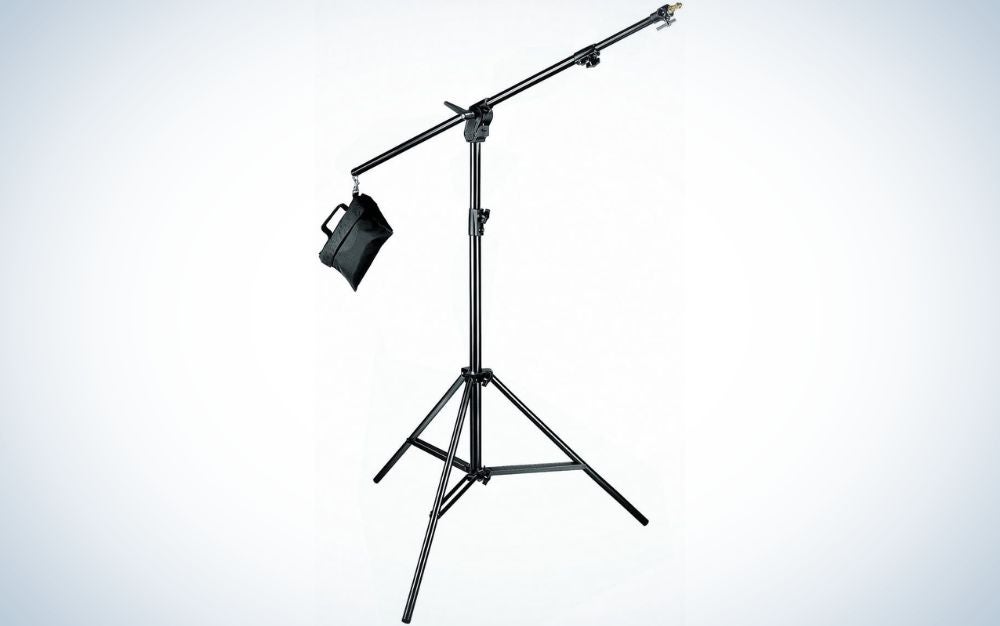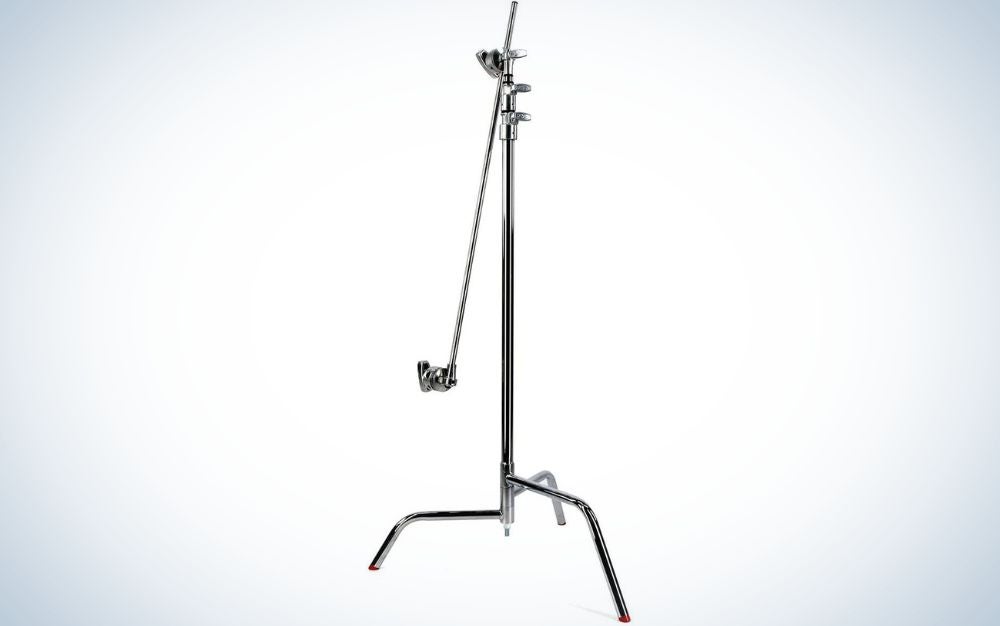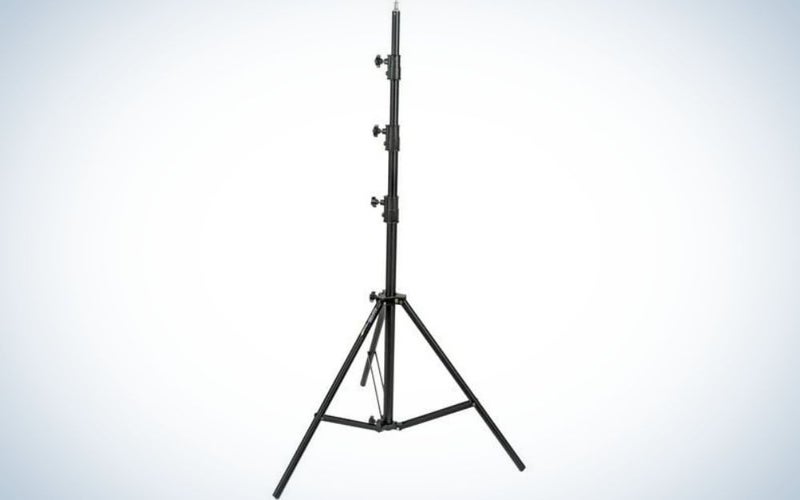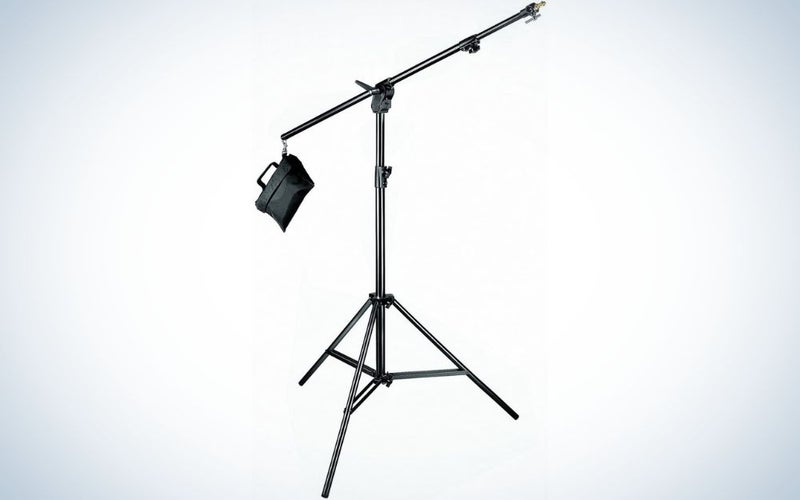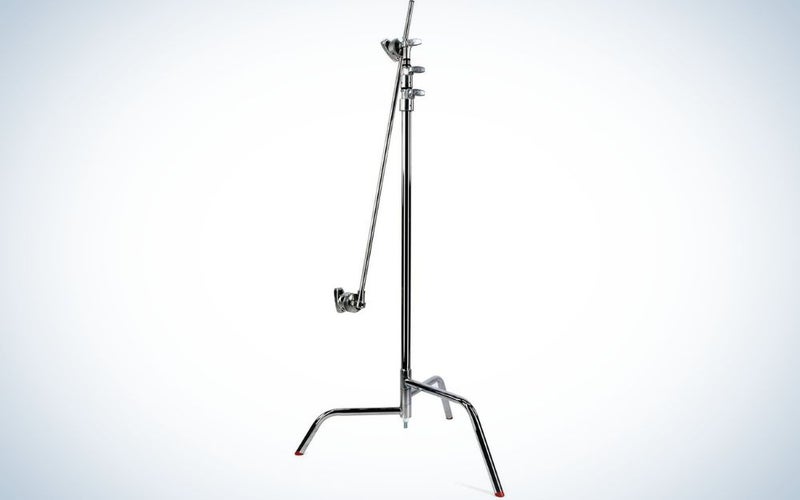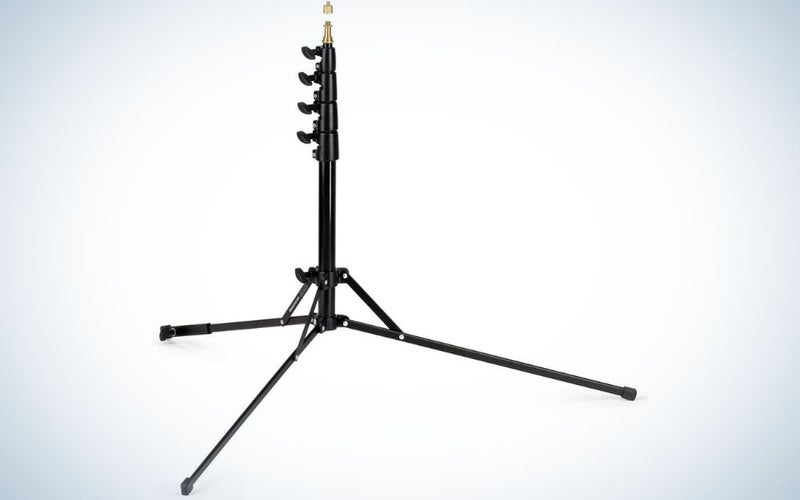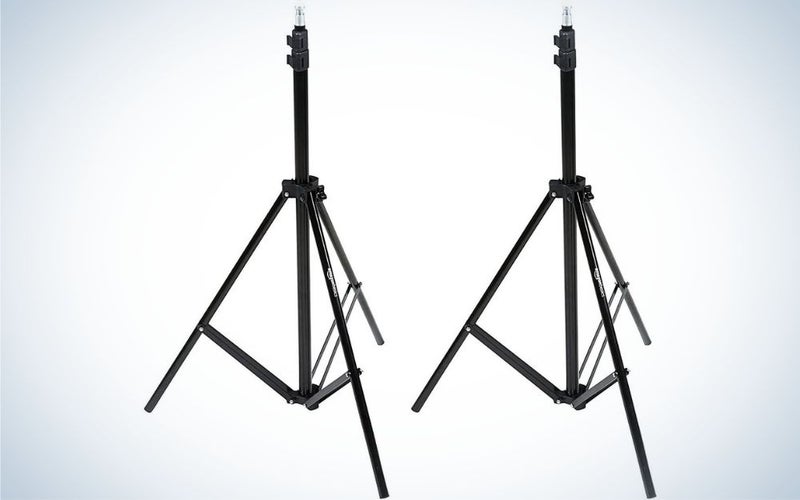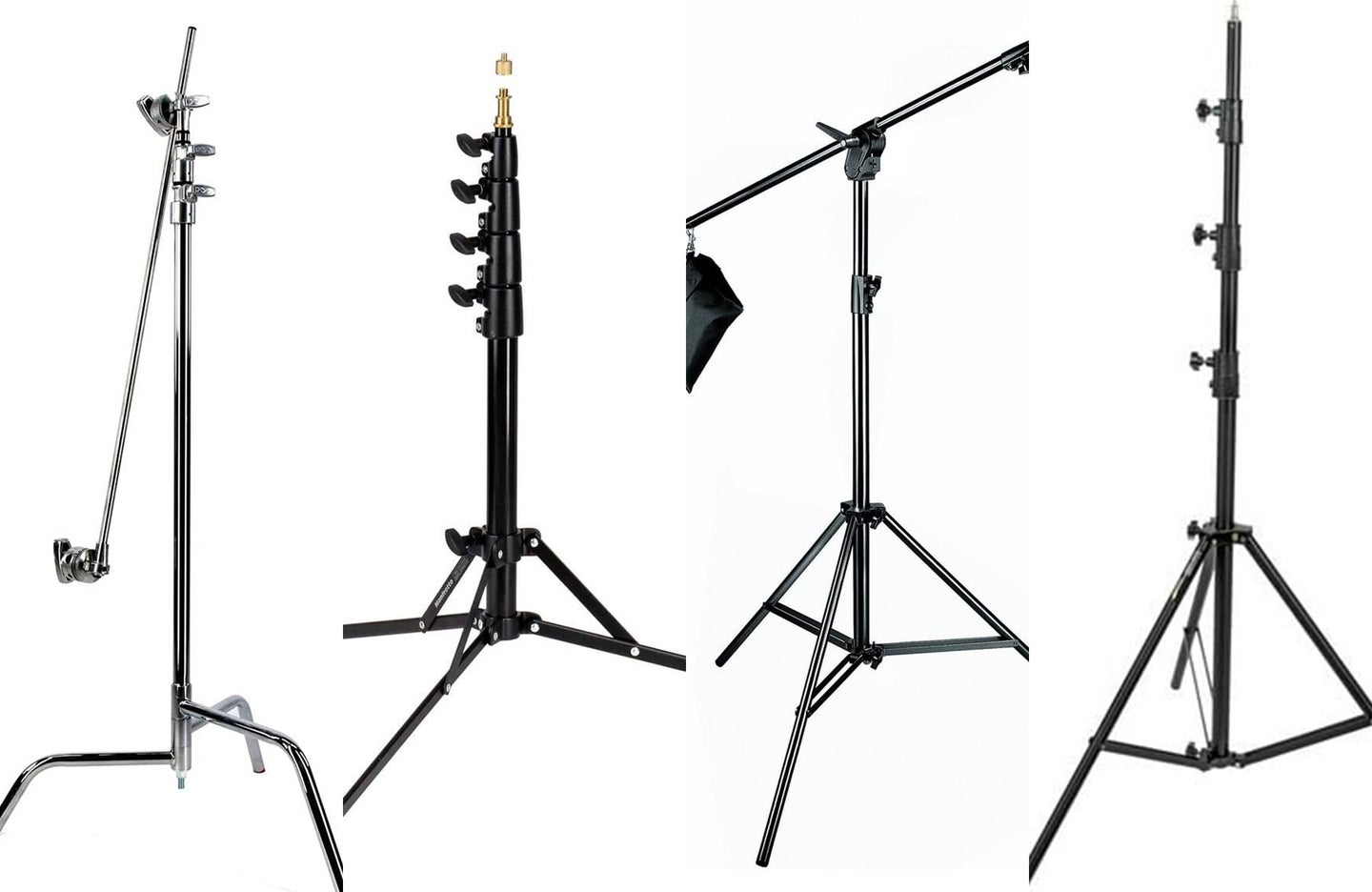
We may earn revenue from the products available on this page and participate in affiliate programs. Learn more ›
A basic light stand can open up a ton of new creative options for photographers by giving them control that on-camera flash and natural light can’t match. They can also be used to mount reflectors, hang backdrops, or even provide more flattering lighting for YouTube videos. These are simple, durable pieces of gear and buying the right one now can have you set for years. Our list of the best light stands emphasizes high-performance models that will stand the test of time and keep your pricey lighting gear from clattering to the ground.
- Best overall: Impact Air Cushioned Light Stand
- Best for varied lighting angles: Manfroto 420B Combi
- Best heavy duty: Matthews C Stand
- Best compact: Manfrotto Nano Light Stand
- Best budget: AmazonBasics Light Stand
How we chose the best light stands
When selecting the products that appear in this buying guide, we considered light stands that would fit a variety of budgets but also work with a wide variety of lights and other camera accessories. It was important to select products that would work for supporting small lights but also include options that could handle larger studio strobes or continuous lighting options.
The products that appear in this guide were selected through a combination of hands-on experience, reviews, and user feedback.
The best light stands: Reviews & Recommendations
Best overall: Impact Air Cushioned Light Stand
Impact
Why it made the cut: A simple, versatile light stand that can handle studio lights while remaining reasonably priced is what makes this our choice for best overall light stand.
Key features
- Air cushioned
- Max height: 13 feet
- 5.8 lbs
Pros
- Affordable price point
- Air cushioned design
- Versatile height capabilities
Cons
- No wheels
The Impact air cushioned light stand is a simple and versatile tool for supporting lights in the studio or on location. It has a max height of 13 feet making it easy to get a high angle on your lights. And the air cushioned design means that gear will lower gently—which is good news for your gear and your fingers. It has a standard 5 /8” stud with a 1 /4” – 20 threaded top which is compatible with all types of photography equipment. Plus it has an extremely reasonable price point.
Best for varied lighting angles: Manfroto 420B Combi
Manfrotto
Why it made the cut: The boom arm on this light stand means more versatile ways to position lights—great for shooting product photography or other flat lay shoots.
Key features
- Comes with sandbag
- Max height: 12 feet
- 5.95 lbs
Pros
- Boom arm makes for versatile lighting angles
- Includes counterweight for balance
- High load capacity, good for big studio lights
Cons
- Pricey
- Bulky
A light stand with a boom arm like this one makes it much easier to cast light downwards while shooting, which is ideal for product photography or flat lays. You can use this particular model as a traditional light stand or a boom arm stand by flipping a lever. It even comes with a counterweight to keep your heavy lights balanced while shooting. It’s pricier than some of the other stands on the market, but it’s essentially two tools in one.
Best heavy duty: Matthews C Stand
Matthews
Why it made the cut: A versatile stand that can handle extremely heavy lighting equipment.
Key features
- Spring loaded base
- Max Height: 10.5 feet
- 25 lbs
Pros
- 22 lb load capacity
- Arc welded legs
- Boom arm for versatile lighting angles
Cons
- Expensive
- Heavy
The Matthews C stand is a heavy-duty option that can support lights up to 25 lbs—making it a great choice for shooters who are working with heavy lights. The tee and spin handles have an ergonomic design that makes it easy to tighten quickly. And you can use it as a vertical stand or a boom for more versatile light angles. In addition, it has a spring-loaded base, 1mm receivers for 16mm pins and 2- 1/ 2” gripheads. For maximum stability, you will want to add some sandbags or counterweights.
Best compact: Manfrotto Nano Light Stand
Manfrotto
Why it made the cut: A lightweight light stand that’s great for the photographer on the go.
Key features
- Compact 20 inch length when folded down
- Max Height: 6.5 feet
- 2.2 lbs
Pros
- Compact and lightweight build
- Relatively tall max height
- Portable
Cons
- Low load capacity
An excellent choice for the photographer who likes to travel light, the Manfrotto Nano Light Stand has a max load capacity of 8.8 lbs. As a result, it’s a great option for speedlights or small LED panels. It has a max height of 6.5 feet but is only 20 inches long when it’s folded down, making it easy to slide into the side pocket of a camera backpack. It even has a leveling leg if you happen to be shooting on uneven terrain.
Best budget: AmazonBasics Light Stand
Amazon Basics
Why it made the cut: These low-cost light stands are simple, effective and come bundled in sets of two—making them a great option for a photographer on a budget.
Key features
- Come bundled as a pair
- Max Height: 6.7 feet
- 3.66 lbs
Pros
- Inexpensive
- Come bundled in a pair
- Lightweight build
Cons
- Low load capacity
- No air cushioning
In most situations, it’s helpful to have two lights—a key and a fill—which also means you will need two light stands. These budget light stands from Amazon Basics come bundled as a pair and cost a fraction compared to name brand stands. Plus they have a lightweight aluminum build and a decent max height of 6.7 feet. Unfortunately, they can only support 7lbs of weight and lack higher-end features like air cushioning. But their low-cost price makes them a steal if you are looking for something simple and are using smaller lights. We suspect that they won’t last quite as long as some of the other options in this guide, but they are a bargain.
Things to consider before buying the best light stands
A light stand is an essential but often overlooked tool in your photography kit. On a professional set, they are used for a variety of reasons—holding lights, adding diffusion or flags, or even supporting backdrops. But amateurs can benefit from them as well. Having a few light stands available when you shoot will help you get more creative with your lighting setups, do classic three-point lighting or even help create more flattering light when vlogging.
Types of light stands
Light stands typically come in three varieties, and what light stand is best for you will depend on both where you are shooting and what kinds of lights you are using. The three base designs of most light stands include a standard tripod style, C-stand style, and a wheeled style. Tripod-style light stands are the most common and typically the most affordable—they’re also good for a wide variety of lights–such as LED ring lights–and accessories.
C-stands have a more robust design and are good for mounting extremely heavy lights, making them a good option for heavy continuous lights, big strobes, or even for hanging seamless backdrops. The wheeled style is most often found in studios and is a good choice for shooters who need to be able to easily move their light source around while they work. C-stands and wheeled light stands are generally more expensive than the tripod-style stands.
FAQs
Q: How much do light stands cost?
Light stands can cost anywhere from $30 all the way up to a few hundred dollars. The price of the light stand will vary depending on the materials that the light stand is made of, what kind of arm it has, max height, and weight load capacity. Generally speaking, light stands that are designed to hold expensive, heavy lights will be more expensive because they have a more robust build quality. Keep in mind that in most situations, you will need at least two light stands to support your key and fill lights.
Q: What do you use to keep the light stand from falling over?
A counterweight or sandbags can be used to help secure your light stand and prevent it from falling over. If you are using a vertical light stand, you will want to sandbag the legs of the light stand to help stabilize it. If you are using a light stand with a boom arm, you will want to add a counterweight to the end of the boom opposite of your light—a sandbag can be used, but a backpack or other piece of gear can be used in a pinch.
Q: What’s the best way to carry a light stand?
The best way to carry a light stand is dependent on how large of a light stand that you are using. For example, a compact nano light stand will probably fold down small enough that it can be carried on a backpack where you might store a tripod. Mid sized light stands can often be comfortably carried in a tripod bag or in your hands. If you are carrying the light stand while a light is attached to it make sure you remove any sandbags from the bottom of the stand first. Light stands with lights attached to them should be carried carefully with two hands. Finally, in most situations, we advise reducing the height of the light stand before attempting to move it.
Final thoughts on the best light stands
Ultimately the best light stand for you depends a lot on the types of lights that you are using during your shoot. If you primarily shoot with speed lights or small LED panels, a low-cost budget light stand will probably suffice. If you are using expensive strobe lights, you will likely want something a bit more robust to handle the weight. If you are using big, heavy continuous lights, a C stand that can support up to 22 lbs of weight is the ideal option.
The post The best light stands in 2023 appeared first on Popular Photography.
Articles may contain affiliate links which enable us to share in the revenue of any purchases made.
